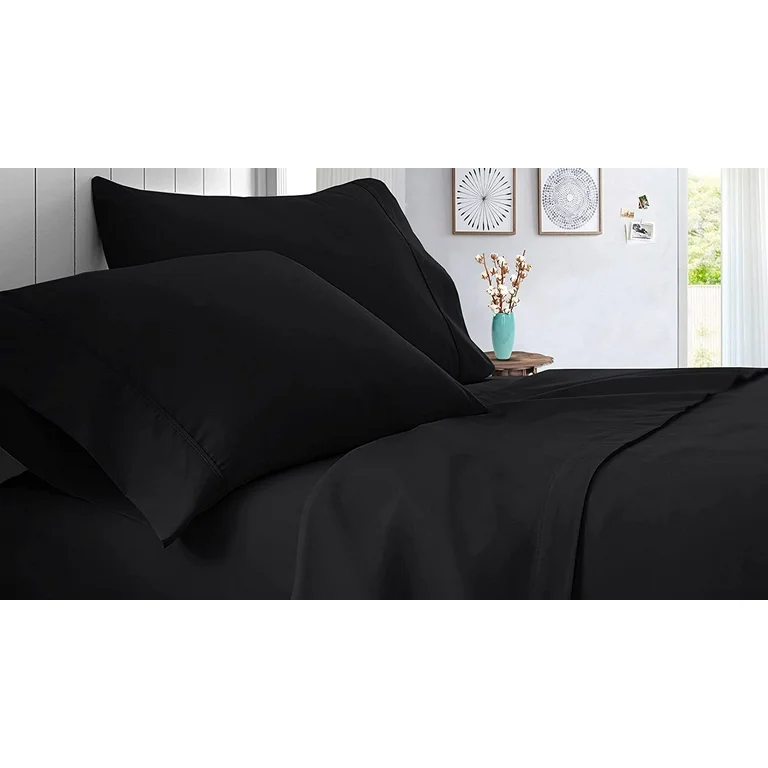The Ultimate Guide to Bed Sheets: Finding Your Perfect Set

When it comes to creating a cozy and inviting bedroom, bed sheets are an essential element. They not only contribute to the aesthetic appeal of your space but also play a crucial role in your comfort and sleep quality. With a multitude of options available, selecting the right bed sheets can be a daunting task. This guide will explore the different materials, thread counts, styles, and care tips to help you find the perfect set for your sleep sanctuary.
Understanding Bed Sheet Materials
The material of your bed sheets significantly impacts their feel, durability, and performance. Here are some common materials to consider:
1. Cotton
Cotton is the most popular choice for bed sheets, prized for its softness, breathability, and durability. Within the cotton category, you’ll find several types:
- Egyptian Cotton: Known for its long, silky fibers, Egyptian cotton sheets are luxurious and incredibly soft, making them a premium choice.
- Pima Cotton: Similar to Egyptian cotton, Pima cotton offers exceptional softness and is resistant to fading and wrinkles.
- Regular Cotton: More affordable than its premium counterparts, regular cotton sheets are still comfortable and breathable.
2. Linen
Linen sheets are made from the fibers of the flax plant and are celebrated for their breathability and moisture-wicking properties. They have a unique texture and tend to get softer with each wash, making them perfect for warmer climates and hot sleepers.
3. Microfiber
Microfiber sheets, made from synthetic fibers, are often more budget-friendly. They are incredibly soft, durable, and resistant to wrinkles and stains, though they may not be as breathable as natural options.
4. Bamboo
Bamboo sheets are derived from the pulp of bamboo plants. They are naturally hypoallergenic, moisture-wicking, and environmentally friendly. With a silky feel, bamboo sheets are great for sensitive skin and those who tend to overheat at night.
The Importance of Thread Count
Thread count refers to the number of threads woven into one square inch of fabric. While a higher thread count can indicate a softer and more durable sheet, it’s not the only factor to consider. Here’s what to know:
- Optimal Range: For cotton sheets, a thread count between 200 and 800 is ideal. Beyond 800, the difference in feel may be minimal, and manufacturers may use multi-ply threads to inflate numbers.
- Quality Over Quantity: Focus on the quality of the fibers rather than solely on thread count. Premium cotton or linen sheets with a lower thread count can still feel luxurious.
Choosing the Right Style
Bed sheets come in various styles, colors, and patterns, allowing you to express your personality. Here are some tips for selecting the right style:
1. Color and Pattern
Consider the color scheme of your bedroom. Neutral tones can create a calming atmosphere, while bold colors and patterns can add vibrancy. Think about how your sheets will coordinate with other bedding and decor elements.
2. Fit and Size
Make sure to choose the correct size for your mattress—common options include twin, full, queen, and king. Also, consider the depth of your mattress; for thicker mattresses or those with toppers, look for “deep pocket” sheets to ensure a proper fit.
3. Seasonal Variations
Some people prefer lighter sheets in warmer months and heavier ones in the winter. It can be beneficial to have multiple sets of sheets to accommodate seasonal changes. For instance, flannel sheets are ideal for winter, while breathable cotton or linen works well in summer.
Caring for Your Bed Sheets
Proper care is essential for prolonging the life of your bed sheets and maintaining their appearance. Here are some care tips:
1. Washing Instructions
Always check the care label for specific washing instructions. Most sheets can be machine washed in cold water and tumble dried on low. Avoid bleach, as it can damage the fibers.
2. Frequency of Washing
Aim to wash your sheets every one to two weeks, depending on personal preferences and lifestyle. Regular washing helps remove dirt, oils, and allergens, contributing to a healthier sleep environment.
3. Storage
Store your sheets in a cool, dry place. Avoid folding damp sheets, as this can lead to mildew. Using breathable cotton storage bags can protect them from dust.
Conclusion
Selecting the right bed sheets is crucial for creating a comfortable and inviting sleep environment. By understanding the various materials, thread counts, and styles available, you can make informed choices that enhance your bedroom’s aesthetics and your overall sleep quality. Investing in high-quality sheets not only elevates your space but also ensures a restful night’s sleep. So take your time, explore your options, and enjoy the luxurious experience of sinking into a beautifully made bed each night!



